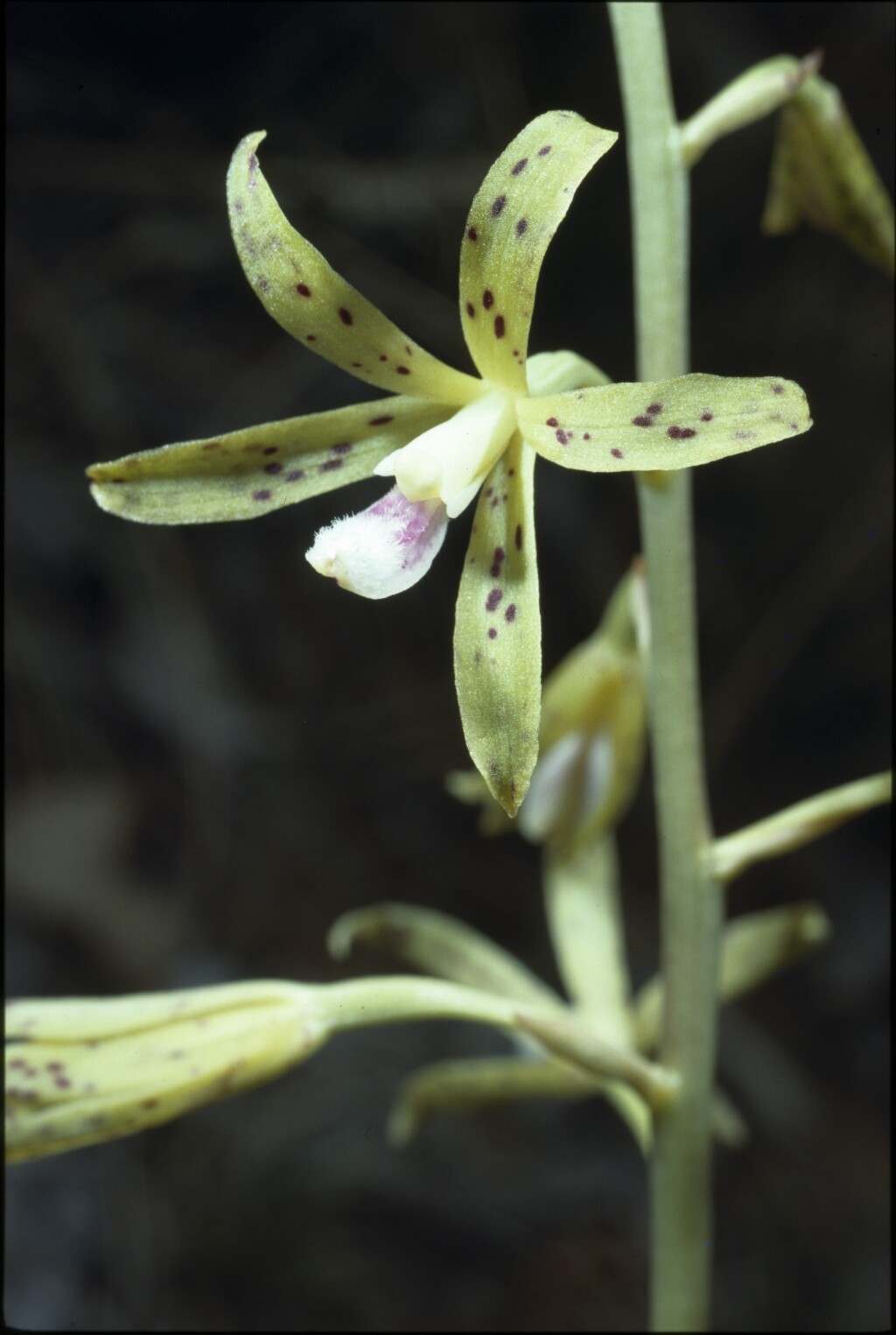Dipodium interaneum
D.L.Jones Yellow Hyacinth-orchidLeafless plant, up to 80 cm tall. Stem greenish, spotted. Pedicels (including ovary) 20–30 mm long; flowers c. 12–20, bright yellow to dull yellowish-green with red or purple spots or streaks, segments widely spreading. Sepals and petals narrowly oblong-obovate, 15–25 mm long, 3–5 mm wide, petals slightly narrower and shorter than sepals. Labellum 15–20 mm long; lateral lobes more or less oblong, clasping column, hairy on inside of base; mid-lobe oblong-elliptic, 10–15 mm long; lamina callus of 2 shortly pubescent, divergent, triangular ridges; lamina with central band of mauve hairs (c. 1 mm long) in apical half, shortly pubescent between these hairs and callus. Flowers Dec.–Feb.
NIS, EGU, HNF. Also Qld, NSW. Very rare and restricted to dry open-forest or woodland in the north-east between Wangaratta and Wodonga, and near Wulgulmerang in the east.
Aside from flower colour, D. interaneum also has a labellum callus which is much longer and broader than that of D. punctatum and D. variegatum, and is more or less glabrous where it extends (after forking) onto the mid-lobe. The petals and sepals of D. interaneum are also little dilated at the apex and are not reflexed or recurved near the tips.
Previously known as D. hamiltonianum which is now considered to be endemic to near-coastal heathy vegetation of south-eastern Queensland, including sandy islands near the mainland. Dipodium hamiltonianum differs in the more heavily blotched, greener flowers and labellum furnished with longer hairs. It flowers earlier than D. interaneum and their habitats are very different.
Entwisle, T.J. (1994). Orchidaceae. In: Walsh, N.G.; Entwisle, T.J., Flora of Victoria Vol. 2, Ferns and Allied Plants, Conifers and Monocotyledons, pp. 740–901. Inkata Press, Melbourne.
 Spinning
Spinning

